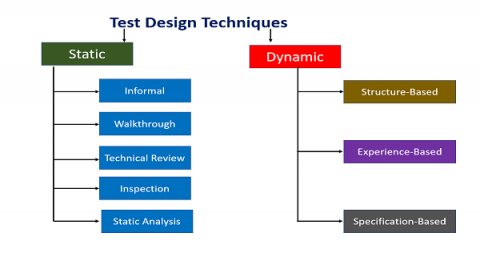
What is Test Design Technique?
A test design technique is used to select a good set of tests from the all possible tests for a given system. As exhaustive Testing is not possible, so we need to use Test Design Techniques in order to reduce the size of the input.
There are two main categories of Test Design Techniques are:
a) Static Techniques
b) Dynamic Techniques
Static Techniques:
Testing of the software documents manually or with a set of tools but without executing the Software.
Two types of static testing techniques:
i) Reviews (Manual Examination)
ii) Static Analysis (Automated Analysis)
Reviews: Types of Reviews
a) Informal Review
b) Walk-through
c) Technical Review
d) Inspection
Static Analysis: Static analysis tools are typically used by developers, Compilers offer some support for Static analysis,
Dynamic Test Design Techniques:
The software is tested by executing it on computer.
Categories of Dynamic Test Design Techniques
i) Specification based or Black box Techniques
a) Equivalence Partitioning (EP)
b) Boundary Value Analysis (BVA)
c) Decision Table Testing
d) State Transition Testing
e) Use Case Testing Etc…
ii) Structure based or White box Techniques
a) Statement Testing and coverage
b) Decision Testing and Coverage
c) Condition Testing, Multi Condition Testing etc…
iii) Experience based Techniques
a) Error Guessing
b) Exploratory Testing


This info is priceless. How can I find out more?|